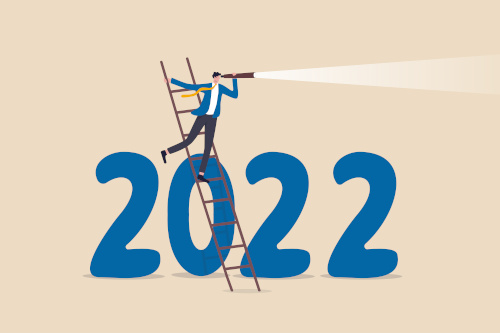
What do post-pandemic trends means for higher education?
It is critically important for higher-ed leaders to examine pandemic-era trends and predict what this means for the future of higher ed
By Kelly Kliner, Higher Education Consultant, Qless January 24th, 2022It’s fair to say the COVID-19 pandemic disrupted society, from how we live day-to-day to how we work, travel, socialize, and more. Certainly the pandemic has changed education at all levels, with parents and kids in close proximity constantly, and college students forced to go home as their schools shut down campuses and switched to remote classes.
With post-high-school degrees being such an indispensable step on the path to success in the modern world, these major changes for colleges, universities, and vocational schools worldwide have had a profound effect on the status of students and on higher education as a whole, and will influence the future of people and economies for years to come.
It is thus vital to examine pandemic-era trends in higher education, and predict what this means for the future.
Talking about the bad news before the good news is easy when we’re discussing the pandemic, and the news has mostly been bad for colleges and universities.
With student, staff, and faculty safety a primary concern, campuses worldwide shut down and made the ad hoc transition to remote classes. While many campuses have re-opened and re-started in-person education, the focus still remains on safety, both from the perspective of administrators determining the best course of action and from students who have drawn back from higher learning due to frustration with the new status quo. As the pandemic continues to rage and recovery goes slowly, schools will experience shrinking attendance and its consequences to tuition and campus culture.
Most American colleges and universities today are operating at full capacity in terms of what is safe during COVID, with only some institutions not yet at that level. Unfortunately, schools are now seeing declining enrollment with students frustrated by the pandemic keeping them from receiving the in-person education they signed up for. This drop in enrollment has been especially prevalent among international students, who do not want to be caught away from home in case of another lockdown, and whose tuition payments were a strong source of revenue for schools. With enrollment down and budgets following, campus staff furloughed during lockdown have chosen not to return to work, straining human resources on campus.
Safety will remain a primary concern while the pandemic remains at large, but for institutions of higher learning, convincing both students and workers to come back is an even greater concern long-term. Part of that process is to embrace new innovations that remove antiquated inconveniences for students and staff alike while also improving pandemic-era safety. Luring people back is an issue of customer and employee experience, and one way to improve that experience is to eliminate lines.
Students do not want to wait in crowded lobbies or offices, and staff don’t want to deal with roomfuls of tired and frustrated students — never mind the added infection risk of crowded rooms. One particular example of this is the financial aid office, always the busiest office on campus. COVID eliminated physical lines only to force beleaguered staff to handle jammed phone lines while students endured long hold times. Schools inundated with calls adopted automated callback or virtual queuing, scheduling students’ calls rather than making them wait.
As schools continue to adapt, virtual queuing is revolutionizing everything: from the financial aid office; to the equally busy student ID office; to the cafeteria, letting students safely social distance and avoid sore feet as they come in to pick up their food when called by an app. Long waits produce anxiety and frustration, and schools that eliminate these experiences will become more desirable for students and workers alike. As people are free to wander or take care of other business as their virtual queue counts down, waiting no longer feels like waiting. A good digital queuing service will also have strong security to protect user data, a necessity as schools embrace the Smart Campus model and become the sorts of forward-thinking institutions that attract the best students and staff once again.
About the Author:Kelly Kliner is a Higher Education Consultant at Qless.